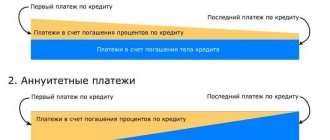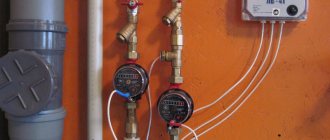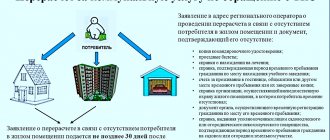What is the difference between sewer and wastewater?
Another common misconception: sewerage and wastewater disposal are the same thing. And since there is no charge for the use of sewerage, it means that the charge for sewerage is also illegal.
Sewerage – collection and disposal of wastewater, sewage, purification and disinfection of the latter. Drainage consists of the following:
- removal of wastewater and sewage from residential buildings, industrial premises, etc.;
- ensuring uninterrupted operation of the route for removing contaminated water outside populated areas;
- delivery to treatment facilities;
- carrying out a number of cleaning activities.
In short, citizens pay to have their used water removed, recycled and reused for technical needs.
What is drainage in utility bills?
The main regulatory document regarding water supply and sanitation of houses is Federal Law dated December 7, 2011 N 416-FZ.
The law regulates:
- powers of government authorities at all levels in this matter;
- the procedure for supplying hot and cold water and its disposal;
- ensuring and monitoring the quality of supplied water;
- principles of environmental conservation in this field of activity;
- regulation of the application of tariffs.
The procedure that public utilities follow when providing services to the population is prescribed in the Rules approved by Decree of the Government of the Russian Federation No. 354 of May 6, 2011
.
Drainage - what is it?
Used water is transported through the sewer system. This also includes the reception of wastewater, transmission through centralized sewerage systems to treatment facilities and their subsequent treatment (clause 2 of article 2 of Law No. 416-FZ).
What does drainage consist of?
The process of removing used water consists of:
- drainage of domestic wastewater from residential and non-residential premises through centralized sewer networks;
- transportation of wastewater to treatment facilities;
- cleaning and disinfection with subsequent use for technical purposes or discharge into natural bodies of water.
Drainage removes all sewage from the house, then it is cleaned, and only then collected in the sewer and transported.
How is it paid and calculated?
The fee depends on the amount of water consumed according to the meter or according to the standard (if there is no meter). For the calculation, the volume of cold and hot water is taken. The same number of cubic meters should go into the sewer. To calculate the consumed water that must be disposed of, water meter readings are taken.
WATER DISPOSAL = (DHW + cold water) × TARIFF
Pay attention to the coincidence of the consumed and allocated volume of water. If there is a difference, you need to contact the management company and ask why this happened.
Water disposal for general house needs (GDN)
Residents of apartment buildings must also pay for general household needs. If a common water drainage meter is installed in the house, then you can measure the difference by its readings and the drainage of water from apartments supplied by individual meters.
If there are deviations, then this will be one. ODN are distributed to each apartment in proportion to its area in the total volume of premises of the house.
If a common meter is not installed in the house, then residents do not have to pay for one, because standards have not been established here, and therefore there is no calculation procedure.
What to do if there is no meter?
For such residents, approved consumption standards are applied, according to which calculations and wastewater disposal are carried out. They are enshrined in regulations of local authorities. These standards far exceed the figures that reflect the actual volumes of resource used.
To know how much to indicate on the receipt for ODN, the following indicators are taken:
- the number of persons living in this living space;
- average standard water consumption in cubic meters per person;
- tariff established by local authorities for 1 cubic meter of wastewater disposal.
By multiplying all 3 indicators, you get the amount that will be reflected in the receipt for utility services for ODN.
Standards are constantly being revised upward, so we recommend installing meters.
Rates
Tariffs for sewerage and water supply are set by local governments for the calendar year.
Their size depends on:
- wear and tear of the sewer system with planning for its modernization or repairs;
- condition of wastewater treatment facilities;
- other factors related to the availability of maintenance personnel and emergency crews.
Tariffs are freely available, and you can check them with the local administration or management company. Approved for residents of apartments where there are no meters.
How does water drainage occur?

If you've ever wondered where the water goes from sinks, washing machines, and other sewerage devices, let's stop there. First of all, the wastewater enters the common pipe and the general house sewer system. The design of the sewer system is well thought out; all waste flows by gravity in the direction of the treatment systems.
When it comes to large populated areas, wastewater cannot reach treatment facilities on its own, so water towers are installed along the transportation route to ensure distillation.
At treatment plants, dirty water goes through several stages of purification: removal of large, solid particles, foreign objects (waste deposited on the screens is disposed of at specialized landfills), the water is passed through a filter, disinfected, part of the water is used in the future, the rest is subject to disposal.
Payment for wastewater disposal goes towards the maintenance of sewer systems, water towers, the operation of treatment systems and structures, and the disposal of used and treated water.
How to calculate drainage
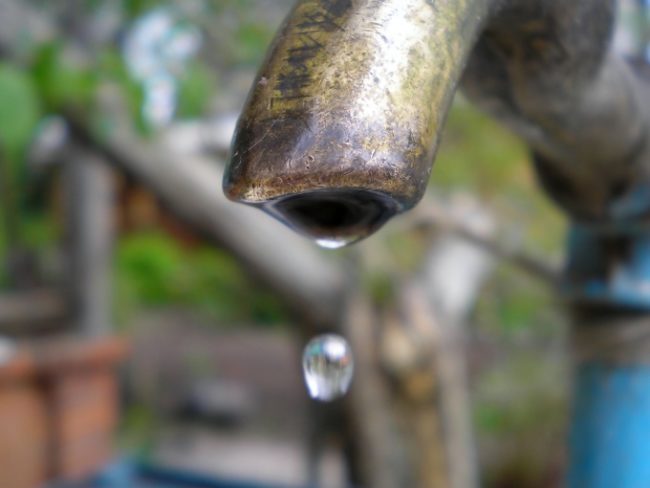
The management company, to whose address most utility payments are received, organizes settlements and monitors the execution of payments. In some cases, residents of an apartment building by common decision determine their own direct payment to the provider of a particular service.
Payment for sewerage refers to monthly payments and is calculated based on the volume of consumed services determined by the meter or standard, multiplied by the tariff in force at the time of payment.
To correctly determine the payment for sewerage, you need to know the volume of water used for hot water supply and hot water supply. By default, in most homes, the volume of drainage should be equal to the amount of water received.
Since apartment sewer meters are not installed, the following formula determines the order in which sewerage is calculated and the amount of resources used:
Wastewater volume = amount of hot water supplied + amount of cold water used.
When hot and cold water meters are installed in the apartment, the total value of the resources consumed is recorded in the column corresponding to the drainage indicator.
The drainage figure is an estimate and does not take into account watering potted flowers or cooking. Thus, if in a month the user has used 10 cubic meters of cold water and 5 cubic meters of hot water, the payment for sewerage will be calculated based on the sum of the two values, i.e. 15 cubic meters.
Having received information about wastewater consumption, calculate the service fee:
The total amount of cold and hot water consumption x the established tariff.
The following example will clearly show how simple it is to calculate fees for sewerage. With a total monthly consumption of 15 cubic meters and a wastewater tariff of 16 rubles, the total payment for the past period will be 240 rubles (the result of multiplying 15 cubic meters by a tariff of 16 rubles).
Each time you receive payment receipts, you need to monitor the data entered into the payment document. Particular attention should be paid if the total consumption of hot and cold water does not coincide with the value indicated in the drainage column. In such a situation, the consumer has the legal right to apply for recalculation to the management company, demanding clarification, or to file a lawsuit for violation of the procedure for calculating utility bills.
If the house is multi-storey, the calculation of drainage is carried out taking into account the readings of the water meter for common house needs (GDN), which serves as an indicator for determining the volume of wastewater throughout the building. Installing an apartment-by-apartment metering device will allow you to count according to the meter and significantly save on payments, because often the standards for water use greatly exceed the average consumption values.
The installation of a meter, which is carried out during the day with further registration of the device and its sealing by the supervisory service of the service company, will allow you to avoid misunderstandings when communicating with the service company.
How is water allocation calculated in the housing and communal services receipt?

When calculating payment for sewerage, a tariff is used. The tariff differs depending on the region. Every year, tariffs are published in newspapers and on the official websites of management companies. The payment amount is calculated in three ways:
- according to individual accounting devices . If apartments are equipped with meters, readings of cold and hot water use are taken. These indicators are summed up and multiplied by the tariff;
- according to common house meters . The installation of meters has now become mandatory, but many owners still have not installed metering devices. In this case, one of the payment methods is based on the readings of a collective meter. In this case, the data from all installed meters is subtracted from the total readings, the resulting volume is divided by the number of registered residents and multiplied by the tariff;
- Another method of accrual is according to standards . To do this, take the average consumption indicator and multiply it by the number of residents.
It is much easier to independently calculate the payment for sewerage if the apartment has meters, and besides, paying by meters is much more profitable than by tariffs; in some regions they are quite large.
How is the payment amount calculated?
There are two ways to calculate the final cost of sewerage:
- according to meters that determine the amount of cold and hot water consumption;
- according to standards established for individual consumption.
In the first situation, to calculate the cost you need to use the following formula:
C = (RHL + RGV)*T, where
| WITH | Cost of the service for a certain period |
| RHL | Cold water consumption according to meter readings for the same period of time |
| RGV | Hot water consumption according to the meter for the same period |
| T | Current tariff |
For example, the owner of an apartment in an apartment building located in Moscow consumed 8 m³ of cold water and 5 m³ of hot water in January 2021. For drainage in January you will have to pay (8+5)*27.47 = 357 rubles 11 kopecks.
Calculation according to consumption standards is carried out if:
- The consumer does not have individual metering devices installed;
- The meter verification period has expired for more than 6 months;
- The consumer does not pay for services and does not report meter readings.
Consumption standards are determined for each region individually and depend on:
- on the form of ownership of real estate;
- on the type of use of the property;
- on the area or number of people living in a separate room.
In this situation, utility services calculate using the following formula:
C = (Hx+Hg)*T, where
| WITH | Price |
| T | Rate |
| Nx | Cold water consumption rate |
| Ng | Hot water consumption rate |
For example, the following water supply standards apply to a one-room apartment with one resident located in St. Petersburg:
Hx = 15 m³;
Ng = 7 m³.
The fee for sewerage in January 2021 will be (15+7)*30.60 = 673 rubles 20 kopecks.
In addition to the amount of water consumed and current tariffs, the amount of payment for housing and communal services, including sanitation, may be influenced by the availability of benefits valid in the region of residence of the property owner.
As a rule, benefits apply to the following categories of citizens:
- WWII participants;
- disabled people of groups I and II;
- Chernobyl victims;
- large families;
- low-income families.
The benefit amount can vary from 25% to 100%.
For example, in Moscow, WWII veterans are provided with a 50% discount on sanitation. Under these conditions, the fee for sewerage, subject to a total water consumption of 13 m³, will be 357.11/2 = 178 rubles 56 kopecks.
What to do if the payment for wastewater disposal in the receipt is overstated?
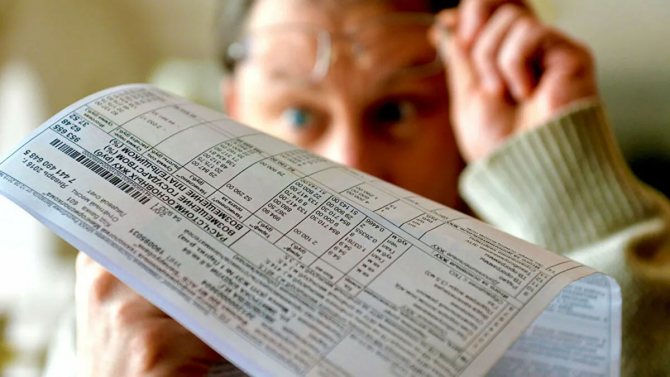
Sometimes there are situations when the owner of a house or apartment discovers in receipts amounts for sewerage that are clearly inflated. Unscrupulous management companies take advantage of the fact that many people find it really difficult to understand payments; it’s easier to overpay. If you find that your calculations do not match the accruals, you need to go figure it out.
To carry out recalculation, you need to write two copies of the application to the management company. One of the copies must be certified by a representative of the responsible person, it must bear the signature, seal and date of acceptance of the application. You should receive an answer within a month, or a recalculation will be made in the next payment. If you do not receive an answer, you need to file a statement of claim with the court.
Important! Ask your neighbors if they also overpaid, file a collective claim. Such claims are resolved much faster.
Possible nuances
The amount of utility bills is affected by several nuances that the management body must keep in mind. For example, a certain category of people has the right to make a payment with a reduced amount. To confirm the right to benefits, citizens must provide relevant documents.
The total amount of all reductions (subsidies or compensation) depends on the category of benefits used by homeowners. It is also influenced by the number of people living in the apartment, as well as the total family income.
The list of established benefits can be found in the territorial division of social protection of the population. Only those citizens who have no debts for housing and communal services can apply for their registration. If they are available, they must be paid in advance before applying for benefits.
ATTENTION! A utility should not offer benefits on its own. They are provided only after presentation of documentation.
All owners whose utility bills exceed 20% of their total income can apply for the benefit.
What are the consequences of not paying for sewerage?
Some people unknowingly decide that it is not necessary to pay for something that is not entirely clear. This leads to the fact that the generally small amount increases every month. Naturally, you will not be disconnected from the sewer pipe, but you are unlikely to be happy with the consequences. The management company has the right:
- charge a penalty for non-payment;
- to forcefully collect a debt through court. Most likely, the court will decide to collect the debt. The decision is transferred to the executive service, and then the executors will either describe personal property, the sale of which will cover the amount of the debt, or through the accounting department they will write off wages;
- impose a ban on traveling abroad.
As you can see, failure to pay for sewerage can have quite unpleasant consequences.
What is water drainage and sewerage
According to the legislation of the Russian Federation, the concepts of sewerage and wastewater disposal are separated. But, in essence, water disposal is sewerage. They are part of the same system, work in symbiosis and cannot live without each other, especially in a city. For private houses there are different rules, but this does not change anything.
Let's try to find out exactly how the two mentioned concepts can be defined, and whether they are really so similar.
As you can see, these systems can be called similar, but they are not entirely identical. They have their own characteristics, such as, for example, we do not pay for sewerage, but sewerage is a separate line in the payment for the apartment. Although this difference does not stop there. Many people believe that sewerage is only a part of the drainage system, but cannot in any way be considered an independent unit. Is it really? We will try to find out and consider this issue in as much detail as possible.
Who should pay for drainage if a drainage pit is used?

Separate drainage pits are used not only in the private sector, but also for apartment buildings where there is no possibility of connecting to a centralized sewerage system. In these cases, the fee is paid to the account of the company with which the contract is concluded. If the sewerage fee has not disappeared from the receipt, you must submit an application to the Criminal Code. If you suspect that the meters are not working correctly, you can order a meter verification.
Line in the receipt: charge for sewerage.
Methods to reduce the amount for sewerage
Often, management companies unreasonably inflate the amount of payment for sewerage services. To eliminate such situations and protect their rights, consumers need to resort to the following actions:
- regularly monitor the amount presented for payment;
- in case of discrepancies, contact the management company and request a recalculation;
- install individual metering devices if they have not been used;
- minimize resource consumption by resorting to traditional methods of saving.
We recommend: What to do if the glass of the cold or hot water meter fogs up
There are numerous sites on the Internet that offer the ability to calculate the amount of payment for sewerage. Special calculators have been developed. The user just needs to log into the site, enter the amount of resources consumed and indicate the region to receive the final amount to be paid.
An independent calculation is also possible using the above formula.



